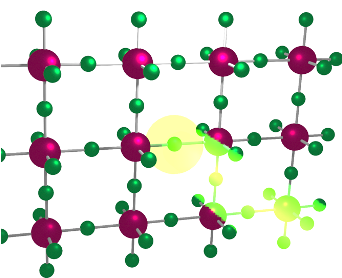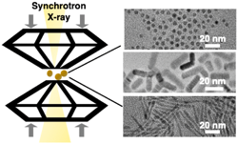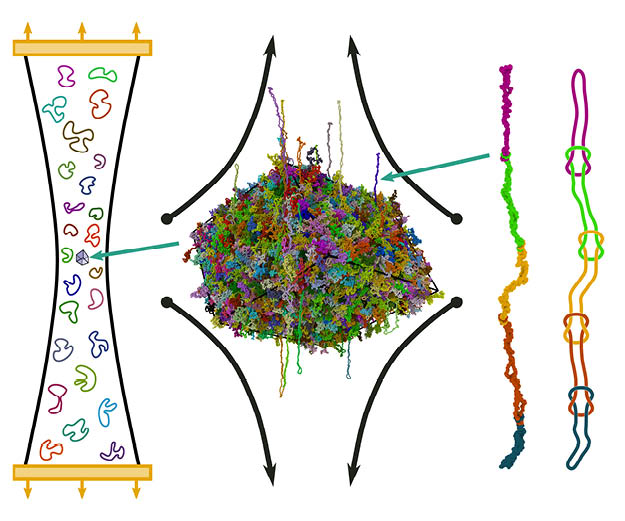Science Highlights
Contact
- User Program Manager
- Heather Brown
2020 Highlights
 |
Crushing Nanoboxes
The ability to simultaneously control yield strength and hardening by changing sample dimensions – while keeping the same structural geometry – has been demonstrated using in-situ SEM and TEM compression of gold-silver nanoboxes and molecular dynamics simulations. |
 |
Molecular Engineering Makes Bright LEDs
By incorporating bulky organic molecules, with atoms arranged in a ring, scientists have produced 2D layered perovskite LEDs with a seven-fold increase in brightness compared to perovskite LEDs layered with organic molecules in a linear chain. |
 |
Tuning Mechanical Properties of Molecular Crystals
For the first time, scientists have measured and quantified mechanical property changes in molecular materials after introducing engineered defects into uric acid crystals. They found increased softening at low dopant concentrations and increased material strength at high concentrations. |
 |
High-Pressure Properties of Nanocrystals Sensitive to Particle Shape
Using wide-angle X-ray scattering (WAXS) and transmission electron microscopy (TEM), scientists have shown that the shape of semiconductor nanocrystals plays an important role in determining their high-pressure properties, specifically for phase transitions. |
 |
Plasmonic Nanoparticles Could Hold the Key to Speeding Up Catalytic Reactions
Using ultrafast optical spectroscopy to compare nanoparticles of gold, gold/nickel, and gold/platinum, CINT scientists have shown that the optical properties of these plasmonic nanoparticles are affected by their composition. |
 |
Nonreciprocity Enables Next-Generation Communication Technology
For the first time, scientists have demonstrated extreme nonreciprocity in microwave reflections, allowing one-way steering and focusing of signals. |
 |
Governing Mechanisms of Plastic Deformation Revealed with In-Situ TEM
For the first time, scientists have measured true activation volume using in-situ TEM observations of plastic deformation in ultrafine-grained gold under tension. |
 |
Spatio-Temporal Optical Imaging at the Nanoscale
Photoluminescence lifetime and intensity from nanoparticle assemblies was spatially mapped on the nanoscale using a newly developed super-resolution imaging system. |
 |
Frustrating Harmful Dendrite Formation in Potassium Ion Batteries
A novel technology has been developed for potassium ion batteries which reduces dendrite formation, a key factor in premature battery failure. |
 |
Elongated Ring Polymers Get Tied Up In Knots
Scientists have discovered a new flow-driven linking process in ring polymers that explains their anomalous viscosity. |
 |
Turning Brittle Ceramic into Silly Putty in a TEM
To explore materials response to extreme environments, a new approach has been developed at CINT combining laser heating and quantitative mechanical testing during in-situ Transmission Electron Microscopy (TEM). |




